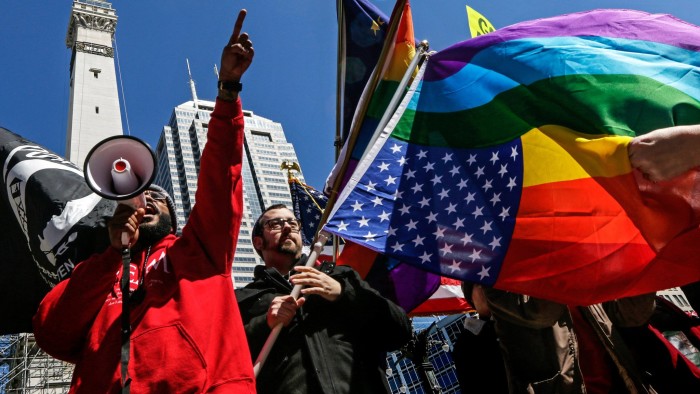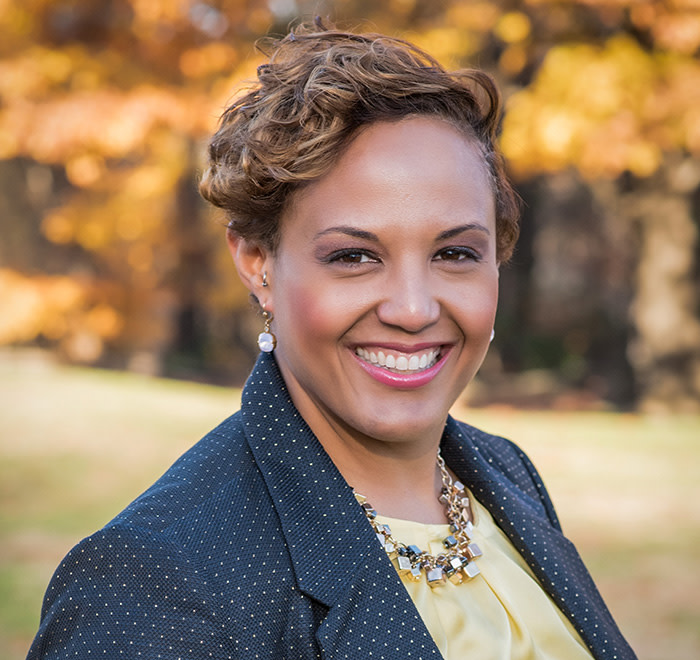Do the right thing: the counsel driving diversity and inclusion

Roula Khalaf, Editor of the FT, selects her favourite stories in this weekly newsletter.
When the US state of Georgia tried to pass a law in 2016 that many believed would legalise discrimination against LGBT+ people, Marc Benioff took a stand. The founder and chief executive of Salesforce, the sales tech software company, joined 500 other companies in opposing the bill. He warned on Twitter that if Georgia’s governor did not veto the bill, which would allow vendors to deny services based on a “sincerely held religious belief”, Salesforce “would have to reduce investments” in the state. It worked.
This was an echo of an earlier effort in Indiana by the San Francisco-based Salesforce and other businesses with operations in the state, such as Dow Chemical and Eli Lilly, to amend a 2015 bill that employees were concerned would lead to discrimination on the basis of sexual orientation. Salesforce takes such actions, he later told the Financial Times, “because they are what our employees demand”.
Amy Weaver, general counsel of Salesforce, flew to Indiana to rally support from other concerned business leaders. By the end of the week, she says, they had drafted an amendment that would prevent the law being used for discrimination. Mike Pence, now vice-president of the US, who was at the time Indiana’s socially conservative governor, came under pressure to protect the state’s business interests and signed the amendment.
“Companies have public platforms in ways they never had in the past,” says Ms Weaver. “[Indiana] was a bit of a watershed moment for corporations, and seeing what they can do.”
As businesses find their feet in driving policy changes in districts where they have interests, as well as within their own organisations, general counsel are taking on a bigger role in supporting this evolution.
Ms Weaver says the move towards large-scale social responsibility has been the biggest shift during her career as a general counsel. “In law school when they ask you, ‘What’s the role of a corporation?’ [The answer] is just ‘do no harm, give a little back to a little-league [baseball] team.’ There was no concept of companies stepping up the way they are today.”
Much of the change, she says, is driven by employees. “People are seeking a purpose.”
Companies looking to attract top talent to their legal teams are taking note.
Lucy Ricca, a lecturer at Stanford Law School and executive director of the Stanford Center on the Legal Profession, says a company’s culture “matters a lot to the vast majority of our students, who are some of the most elite students in the country . . . They have high expectations for institutions prioritising diversity and recognising that it makes a better and more competitive workplace.”
Employers are familiar with the argument that diverse workforces improve the bottom line. A 2017 McKinsey study, called Delivering Through Diversity, found a statistically significant relationship between a company’s diversity and better financial performance.
Diversity is a broad term that encompasses gender, ethnicity, socio-economic background, as well as physical and developmental disabilities. Achieving more diverse legal talent is on the minds of both in-house teams and law firms: how to attract it, keep it and best accommodate it.
Meaningful change involves going beyond minimum regulatory standards, says Chad Jerdee, general counsel and chief compliance officer at Accenture. Mr Jerdee lost a leg in a head-on crash with a drunk driver and, after a long recovery, wears a prosthetic.
“Usually diversity policies are loosely affiliated with employee resource groups,” he says, referring to initiatives for staff around a shared interest. Mr Jerdee, however, wanted to build a programme that was more consistent and strategic in how the consultancy governed initiatives and recruitment for employees with disabilities. Accenture’s Persons with Disabilities programme helps accommodate employees with physical and cognitive impairments through specialised software, workstations and mentoring, and has become a model for others.
Mr Jerdee’s team takes its lead from those it serves: 60 per cent of the team involved in developing and implementing the company’s adaptive technology have a disability.
He emphasises that making an organisation’s culture more inclusive requires buy-in at the very top, with senior leaders setting and managing measurable targets for disability inclusion. Accenture’s global legal team relies on data to track how they are meeting diversity recruitment targets and retaining talent. “You don’t achieve things if you don’t measure them.”
GCs can play a vital role, he says: “Whatever general counsel does needs to be a part of the general culture of the company. Focusing just on compliance is selling the function short.”
As the way companies work evolves, the role of the general counsel in increasing diversity is changing, too. At Salesforce, Ms Weaver says: “We are in uncharted waters. The role of a company as a platform for change is evolving rapidly. For general counsel, we constantly have to be focused on the values of the company. We have to do this with all of our stakeholders in mind — our shareholders, our employees, our customers, our partners and our communities.”
Sometimes the challenge for a company is to look inwards to ask where problems may exist, even if they do not know what the outcome will be. After a public announcement in 2015, Salesforce commissioned a company-wide study into salaries of its employees to understand its gender pay gap. The legal and human resources teams worked to analyse the results of the survey, and the company found that 6 per cent of employees earned less than peers of the opposite gender for the same work. The company paid out $3m to even the gap.
The next year, Salesforce added a new set of criteria to the survey, broadening the definition of diversity. Again, it paid out $3m. The initiative was repeated again this past year, revealing a gap of $2.7m. “It shows that there isn’t a finish line on this,” Ms Weaver says. “You can’t just do this and declare victory. You have to keep setting goals.”
“Thinking, ‘we’re not just going to do a one-off’ is so important,” says Gretchen Bellamy, a former assistant general counsel at Walmart who now works as a diversity and inclusion consultant and chairs the commission on Racial and Ethnic Diversity in the Profession for the American Bar Association. Finding solutions that are sustainable is a business imperative, she adds. “If you have a company that operates in 28 different countries around the world, if you have a diverse customer base and you want to carry the products that people want to buy, diversity has to touch every bit of the business.”
“Sustainable businesses have healthy cultures. They’re ethical, they’re diverse,” says Mr Jerdee. For a company to be sustainable in today’s market, its culture must be healthy across the organisation.
Mr Jerdee says: “We are competing for talent in the marketplace. The nature of what we do is provide clients with thoughtful creative ideas to solve their business problems. If we don’t have a diverse workforce we can’t provide quality solutions to our clients. It’s also just the right thing to do.”
A special relationship

The interaction between general counsel and law firms is an essential component of helping both reach their diversity goals, says Gretchen Bellamy (pictured above), chair of the commission on Racial and Ethnic Diversity in the Profession for the American Bar Association (ABA).
General counsel, eager to work with more diverse groups of lawyers, can press law firms to develop diverse teams or risk losing their contracts. But GCs need to be careful not to set unrealistic goals at the expense of minority lawyers at firms, who are often in short supply and high demand. They risk being put on a single client account, warns Ms Bellamy. Only a quarter of Fortune 500 general counsel are women and 10 per cent are from minority ethnic groups, according to a 2018 ABA survey.
Ms Bellamy advises firms to communicate with GCs about their diversity goals, rather than reaching them by restricting the options of diverse lawyers, which can hold them back in their careers. She says retention of diverse staff remains a challenge for firms, as lawyers become frustrated with the lack of options and leave.
Comments